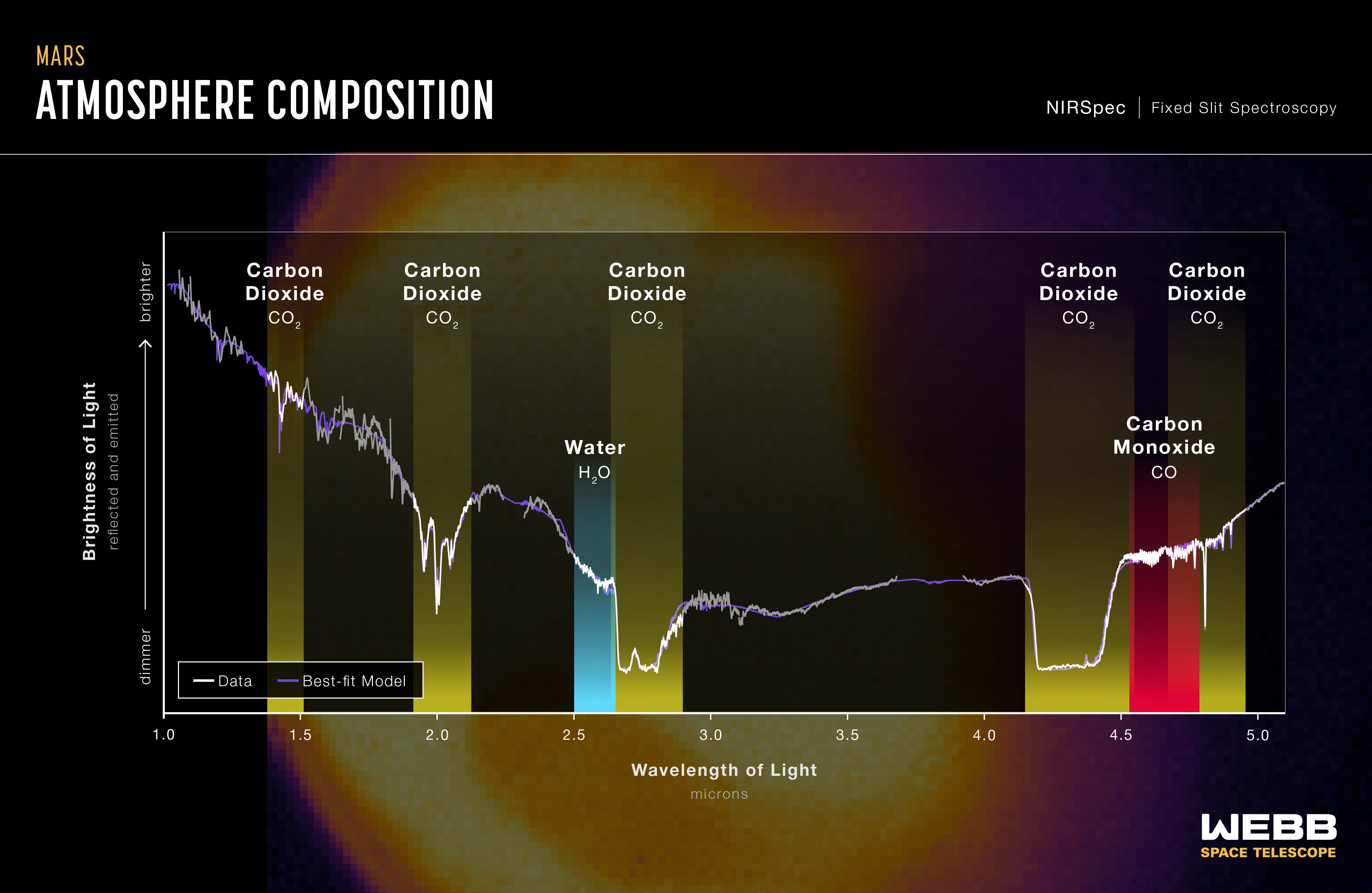Astronomers have just revealed the first images of Mars taken by JWST, showcasing our closest planetary neighbor from a never-before-seen perspective.
The freshly released images were taken by JWST on September 5, 2022, capturing a region of the Red Planet’s eastern hemisphere. This includes a glance at Hellas Basin, one of the largest known impact craters in the Solar System that’s around 7,152 meters (23,465 feet) deep
The image was snapped by the space telescope’s Near-Infrared Camera (NIRCam) at two different wavelengths. The image on the left simply shows a surface reference map created from NASA and the Mars Orbiter Laser Altimeter (MOLA) data. It largely consists of reflected sunlight, hence it appears very similar to visible-light images.
On the right, we see two near-infrared images taken by JWST. Near Infrared is a wavelength just outside the range of what humans can see. Infrared can travel more easily through dust and gas than visible light, which means JWST can see further into the cosmos than any other telescope. By tapping into this wavelength, scientists are able to study all kinds of phenomena on the Martian surface, including dust storms, weather patterns, and changes in the season.
The brightness of the light is related to the temperature of the surface and the atmosphere, with brightness decreasing toward the polar regions because they receive less sunlight.
It’s also possible to use this near-infrared image to learn about the composition of Mars’s atmosphere since levels of carbon dioxide can impact how heat is trapped and absorbed. Atmospheric influences are likely to be why you can see a patch of darkness over the deep abyss of the Hellas Basin.
“This is actually not a thermal effect at Hellas,” Geronimo Villanueva, the principal investigator of NASA’s Goddard Space Flight Center, said in a statement.
“The Hellas Basin is a lower altitude, and thus experiences higher air pressure. That higher pressure leads to a suppression of the thermal emission at this particular wavelength range [4.1-4.4 microns] due to an effect called pressure broadening. It will be very interesting to tease apart these competing effects in these data.”

JWST’s first near-infrared spectrum of Mars showing subtle variations in brightness between hundreds of wavelengths. Image credit: NASA/ESA/CSA/STScI and Mars JWST/GTO team
Capturing an image of Mars might not initially sound like a remarkable feat, especially not for the world’s most powerful and expensive space telescope. However, imaging such a bright and close entity like Mars is tricky for JWST, which was designed to detect the extremely faint flickers of light in the most distant galaxies in the universe.
By using special techniques and very short exposures, it was able to capture the Red Planet, which would typically be too bright for the telescope’s super-sensitive equipment.
JWST is currently sitting nearly 1.5 million kilometers (nearly 1 million miles) away at Earth’s second “Lagrange point” (L2), directly “behind” our planet as viewed from the Sun. After launching to this point on Christmas Day 2021, the JWST released its first full-color images in July 2022, revealing some gorgeous shots of colossal galaxy clusters and stunning nebula.
Others members of our Solar System have already been imaged too. Last month, the first images of Jupiter from JWST were published, revealing the planet’s rings, some of its moons, and even aurorae.
JWST has only been fully operational for a few months, but the fruits of its work have already proved spectacular – and the best is yet to come.
Source Link: JWST Reveals Its First Images Of Mars